UK: Madder Hawkmoth; Komarov's Sphinx, RUS: Komarova Brazhnik, CZ: Liaj komarovi, FIN: Venäjänkiitäjä.
Deilephila komarovi drilon Rebel & Zerny, 1931, in Buresch & Tuleschkow, Izvestiya na Tsarskitê Prirodonauchni Instituti v Sofiya 4: 127.Type locality: «Kula Ljums, [Brutti, right bank of the Drin [Drim], immediately below the confluence of the Black and White Drin [Drim] rivers, sitting on boulders]», Alban. [Albania].
(Taxonomic note. Rethera komarovi drilon was needlessly described again by Rebel & Zerny in 1932 in Denkschr. Akad. Wiss. Wien 103: 85, a publication which is sometimes quoted as 'Rebel & Zerny, 1934'.)
[Further details on this species, as well as photos of all stages, can be found on Lepiforum.]
Holarctic; western Palaearctic region. Pleistocene refuge: Monocentric -- Syrian refuge. The isolated population in Europe appears to have been the result of a post-glacial expansion in range from Turkey, followed by a small contraction.
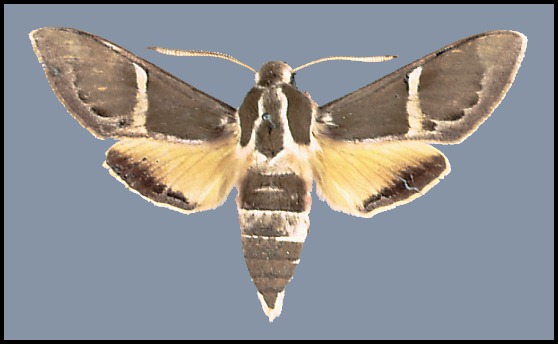
Wingspan: 55--65mm. Similar to subsp. rjabovi O. Bang-Haas, 1935, but smaller with better-defined, darker markings on the forewings, particularly in European examples. The species is confusable only with Rethera brandti O. Bang-Haas, 1937 and the other two Rethera species from Afghanistan, but is considerably larger than any of them.
Exhibits little variation except for the intensity of 'tint' colours, which range, ventrally, from pale orange to deep pink. Newly-emerged examples often have a magnificent rose sheen. However, due to the fact that the dorsal green coloration fades in strong sunlight, those collected from drier regions tend to be paler than examples from more verdant areas. The same applies when killing agents such as diethyl ether and ethyl acetate are used.
The presence, width and intensity of black lines and specks on the forewings also varies, with specimens from colder areas being darker and more heavily marked.
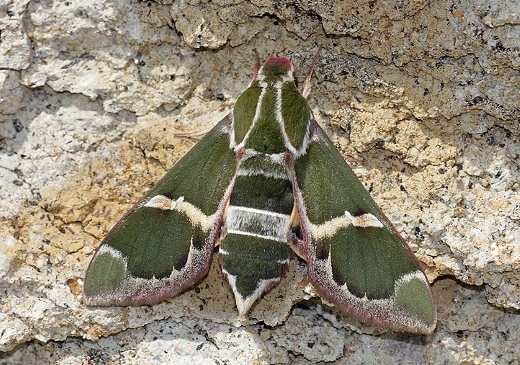
Occurs in mountains and hilly areas where it frequents 'vegetation islands' on sparsely vegetated cliffs and rocky slopes which are cold in winter and become parched in summer. Little is known of the behaviour of this species, except that it is attracted to light. In Turkey, especially partial to dry, herb-rich hillsides and vegetation-fringed, dry riverbeds, generally at 600--1600m.
Many individuals are attracted to most forms of light and, by day, seem to have a preference for resting on boulders (Rebel & Zerny, 1932).
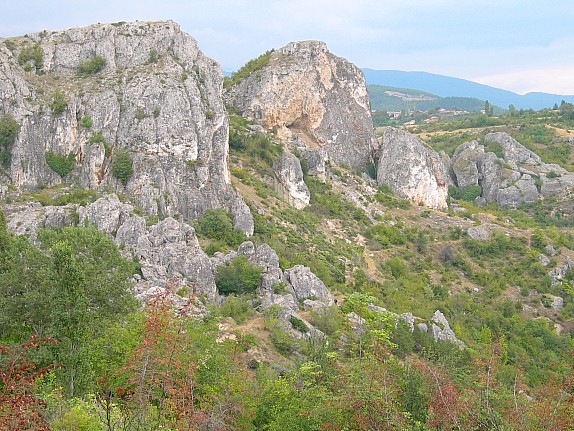
Univoltine; mid-April to the second week of June, depending on location and season. In Turkey, from early April/May until late June, depending on altitude, but only during July above 1500m (Danner, Eitschberger & Surholt, 1998).
OVUM: Illustrated by Danner, Eitschberger & Surholt (1998) and identical to that of subsp. rjabovi.
LARVA: Full-fed, 70--90mm. A full-grown larva is illustrated by Pelzer (1991), while Danner, Eitschberger & Surholt (1998) picture every instar. These, as well as the full-grown larva, are identical to that of subsp. rjabovi.
Occurs during May, June and/or July.
Major Hostplants. Species of Rubia and Galium (Pittaway, 1979a), especially the flowers and immature seeds.
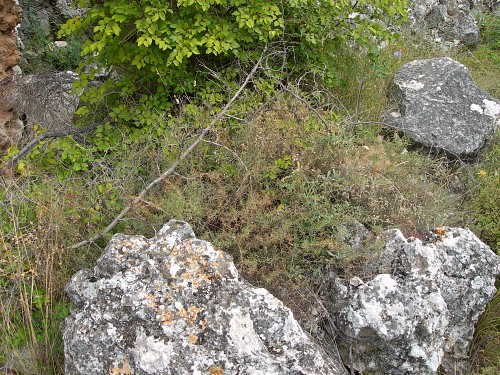
Minor Hostplants. Reputedly Euphorbia (Melnikow, 1922; Buresch & Tuleschkow, 1931), but this is highly unlikely. In captivity it readily feeds on the ornamental Plocama pendula, especially the flowers and immature seeds.
Note. The larva from the Kopet-Dagh, Turkmenistan, described by Buresch & Tuleschkow (1931) as feeding on a species of Euphorbia, matches that of Hyles euphorbiae conspicua (Rothschild & Jordan, 1903) and was therefore not that of Rethera komarovi.
PUPA: As for subsp. rjabovi, but smaller. The overwintering stage.
None recorded.
The mountains of eastern Albania (Rebel & Zerny, 1932; Eichler & Friese, 1965; Beshkov & Nahirnić, 2021), the Republic of North Macedonia (Krpač et al., 2019), northern Greece (Luca Sattin, iNaturalist 2018) and southern Bulgaria (Ganev, 1984; Beshkov, 1995; Beshkov & Langourov, 2004; Hristova & Beshkov, 2016) as an isolated population. Then western (Kocasaraç et al., 2023), central (Daniel, 1932; de Freina & Witt, 1987) and central-southern Turkey (Daniel, 1932; Hariri, 1971; Feza Doganlar, pers. comm.; de Freina, 2012; Koçak & Kemal, 2018; Özgür Koçak, iNaturalist 2024).
Locations for Bulgaria are: Kresna; Slavyanka Mountains; Eastern Rhodopi Mountains, e.g. Arda Valley; Madzharovo (Chris van Swaay, iNaturalist 2006).
A very sparsely distributed species, though large colonies sometimes occur in certain localities. It may have a wider distribution than indicated due to the remote, inaccessible nature of its habitat.
Extra-limital range. None.
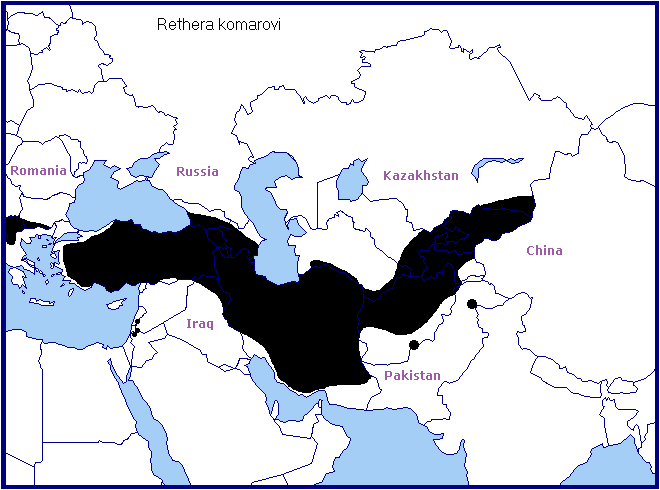
Eastern Turkey, the mountains straddling Jordan, Syria and Lebanon, the Republic of Georgia, Armenia, Azerbaijan, Iraqi Kurdistan (Wiltshire, 1957), and from northern Iran south along the Zagros Mountains (Barou, 1967; Ghassemi, Alemansoor & Alehossein, 2010) to the rest of central, southern and eastern Iran (and maybe also western Afghanistan (Ebert, 1969)) as subsp. rjabovi O. Bang-Haas, 1935. Central and eastern Afghanistan (Ebert, 1969), Balochistan and the Hindukush area of western/northern Pakistan (leg. Z. Varga & G. Ronkay, ex coll. György Fábián, coll. Sphingidae museum of Czech Rep.), southern Uzbekistan (Western Gissar Mountains), Tajikistan (Derzhavets, 1984), Kyrgyzstan and southern and eastern Kazakhstan (Eitschberger & Lukhtanov, 1996) as subsp. stipularis (Swinhoe, 1885). The Kopet-Dagh mountains of northeastern Iran and southwestern Turkmenistan as subsp. komarovi (Christoph, 1885).
 Return to species list
Return to species list